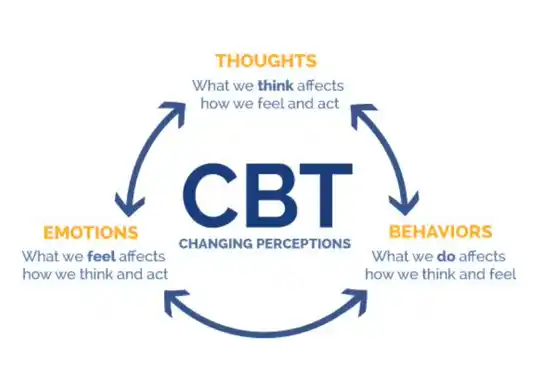WHAT IS CBT?
Cognitive-behavioral therapy (CBT) can help children to reframe how they identify, interpret and assess their emotional and behavioral reactions to unfavorable experiences. CBT differs from other therapy approaches by focusing on the ways that a child or adolescent’s thoughts, emotions, and behaviors are interconnected, and how they each affect one another.
Understanding that emotions and actions can be regulated and managed is powerful, and it can lead to gains in self-control, emotion regulation, coping skills, and emotional awareness during this important developmental stage.
Cognitive behavioral therapy is based on behavioral and cognitive theories of human psychopathology. CBT has been proved to be an effective treatment for a wide range of psychological issues in children and adults by targeting various areas of possible susceptibility with developmentally-guided methods and flexible intervention routes.
KEY CONCEPTS OF CBT
CBT is a type of talk therapy that teaches people how to recognize and alter problematic ideas and actions. Therapy concentrates on the present and future rather than the past. Learning fresh perspectives teaches a child how to respond differently rather than exacerbate difficult situations.
CBT for kids has practical real-world applications. This therapy can assist your child in recognizing the negative nature of their thought patterns and learn how to replace them with more positive ones.
The focus of therapy is on how the individual is thinking, behaving, and communicating today rather than on his or her early childhood experiences.
Cognitive-behavioral therapists have three fundamental assumptions:

- Cognitive activity impacts behavior
- Cognitive activity can be monitored and changed
- The desired change in behavior can be accomplished through changing cognitions
TREATMENT BENEFITS
Because emotions, thoughts, and behaviors are all linked, CBT approaches allow for therapists to intervene at various points in the cycle. This form of therapy can provide your child with practical solutions for improving their lives in the present. Once these tactics become habits, the acquired talents can be with them for the rest of their lives.
CBT is an evidence-based practice shown to be effective for a variety of issues.
CBT can help children learn to control:
- self-defeating thoughts
- impulsivity
- defiance
- tantrums
Replacing negative reactions with:
- improved self-image
- new coping mechanisms
- problem-solving skills
- more self-controL
CBT TECHNIQUES
While CBT is a type of talk therapy, it’s so much more than talk. The therapist will work to provide tangible ways for your child to take control and empower themselves. They will teach skills that can be put into practice immediately. There are differences between cognitive therapies and behavioral therapies for young people. However, both approaches have much in common, such as:
- The therapist and child or adolescent develop goals for therapy together, often in close collaboration with parents, and track progress toward goals throughout the course of treatment.
- The therapist and client work together with a mutual understanding that the therapist has theoretical and technical expertise, but the client is the expert on him-or herself.
- The therapist seeks to help the client discover that he/she is powerful and capable of choosing positive thoughts and behaviors.
- Treatment is often short-term. Clients actively participate in treatment in and out of session. Homework assignments often are included in therapy. The skills that are taught in these therapies require practice.
- Treatment is goal-oriented to resolve present-day problems. Therapy involves working step-by-step to achieve goals
CONDITIONS THAT CBT MAY HELP
- ADHD
- Anxiety and mood disorders
- OCD
- Anxiety with autism spectrum disorder
- Trauma and post-traumatic stress disorder (PTSD)
- Oppositional defiant disorder (ODD)
- Low self-esteem
- Bullying
- Depression
- Self-harm
- Bedwetting
- Adolescent substance use
- Eating Disorders
A TAKE HOME MESSAGE
Children can benefit from cognitive-behavioral therapy to help them rethink their perceptions of – and reactions to – negative emotions and situations. CBT does not aim to eliminate unpleasant emotions entirely; rather, it provides methods for children to begin to grasp that emotions will pass, much like a black cloud on a sunny day.
Cognitive behavioral therapy can help children develop more realistic versions of situations and provide the tools they need to cope with them over time. Negative feelings and experiences, rather than being avoided or accepted as facts, can be identified, comprehended, and responded to in more productive and constructive ways.

